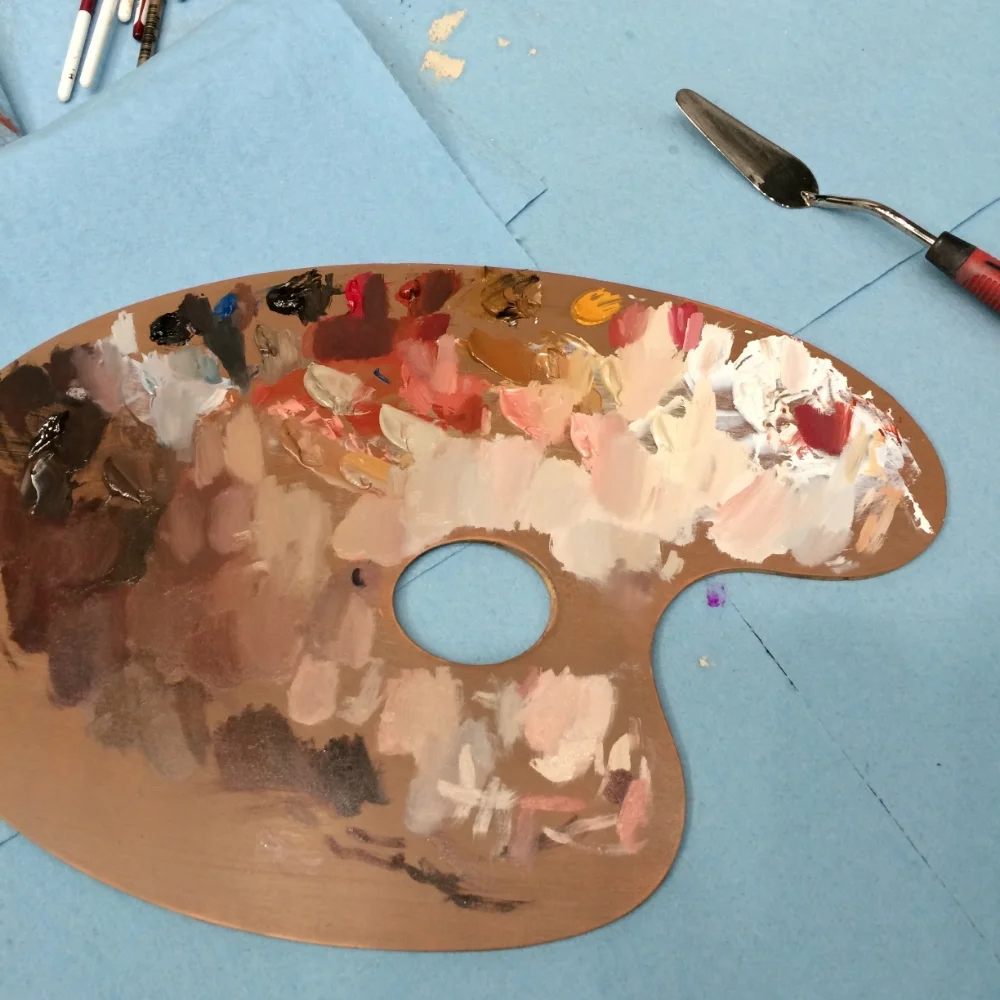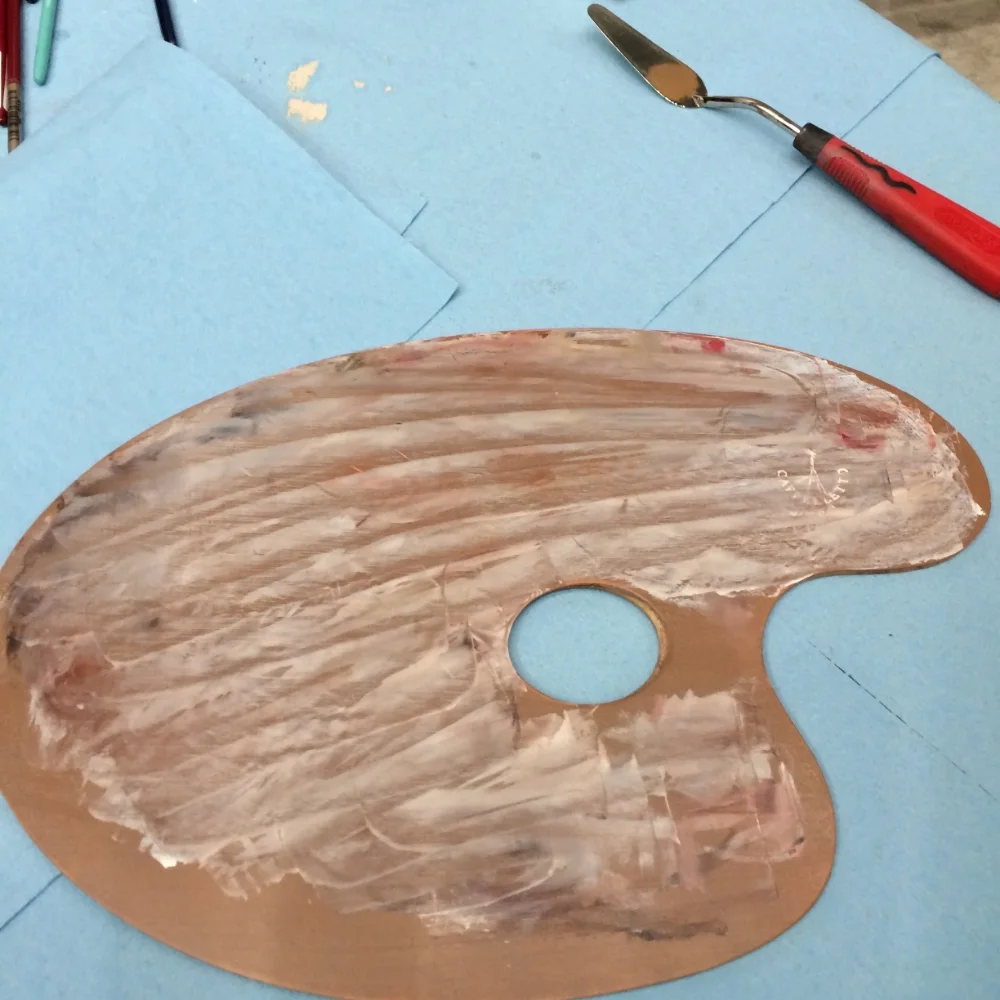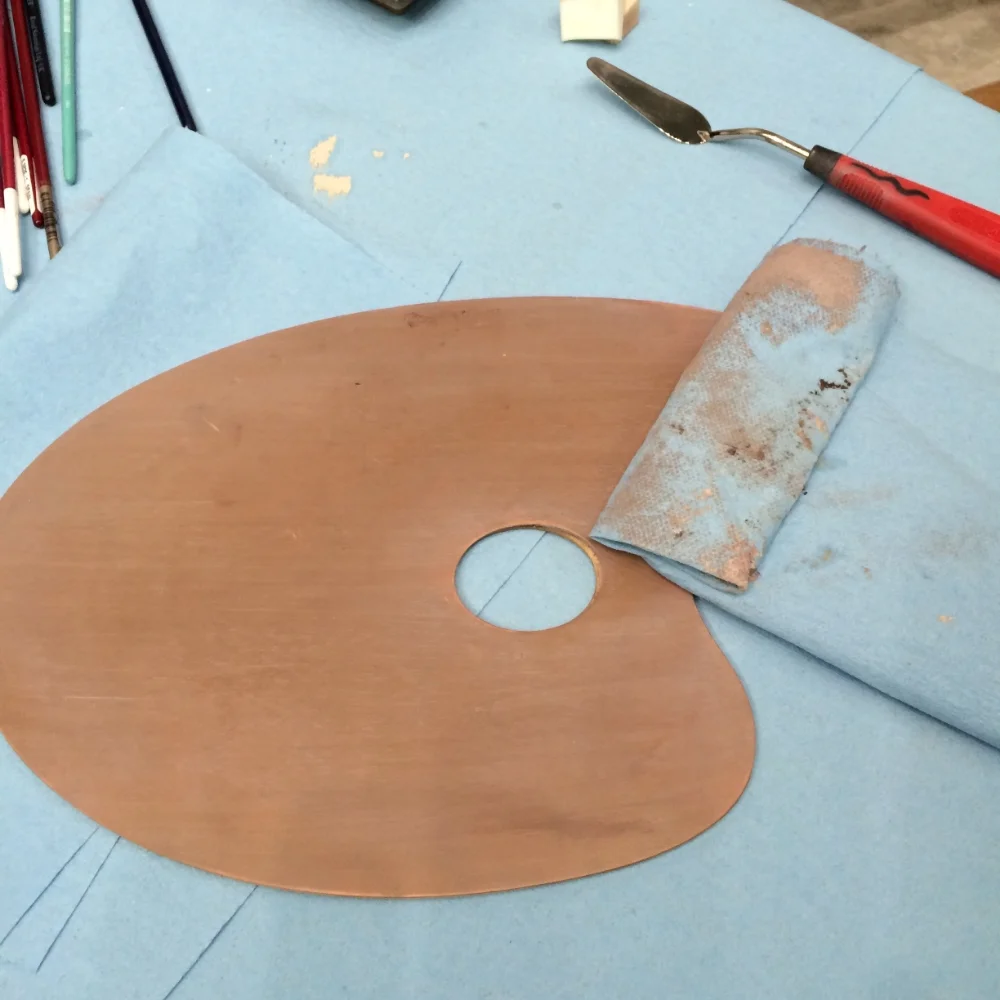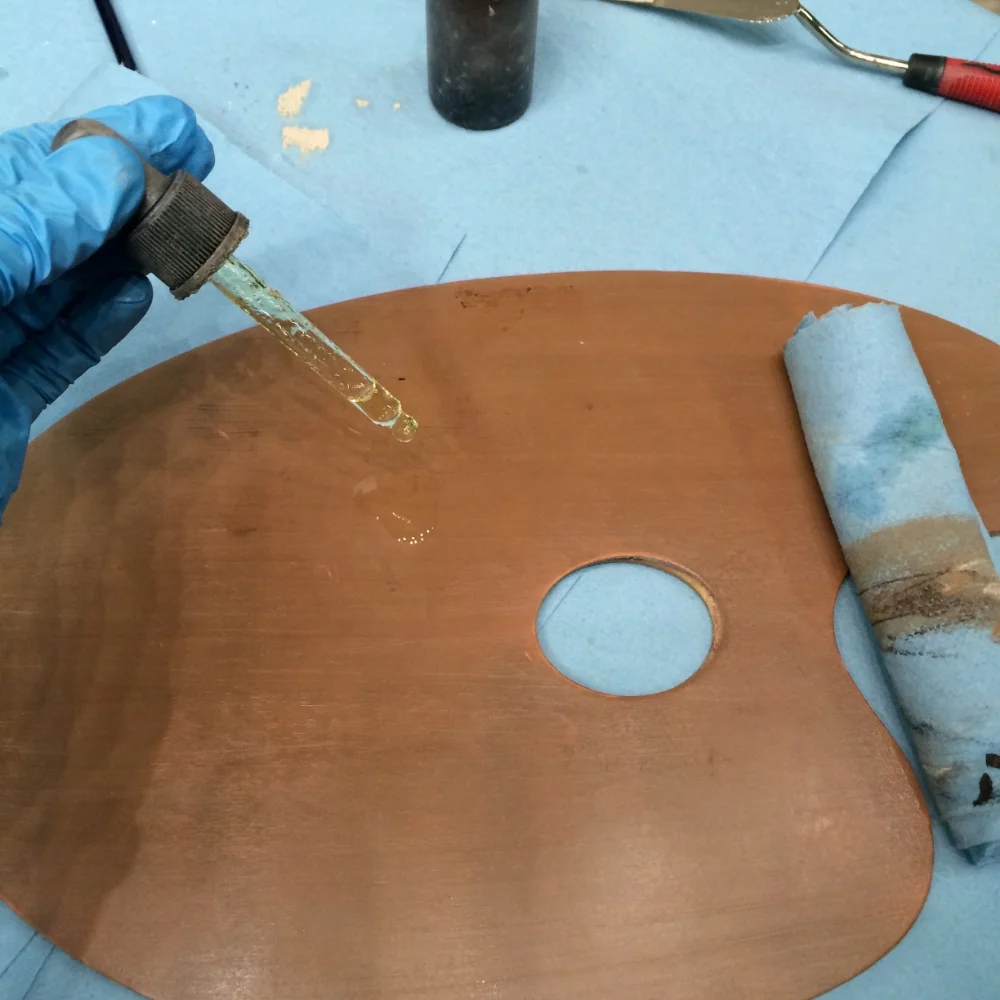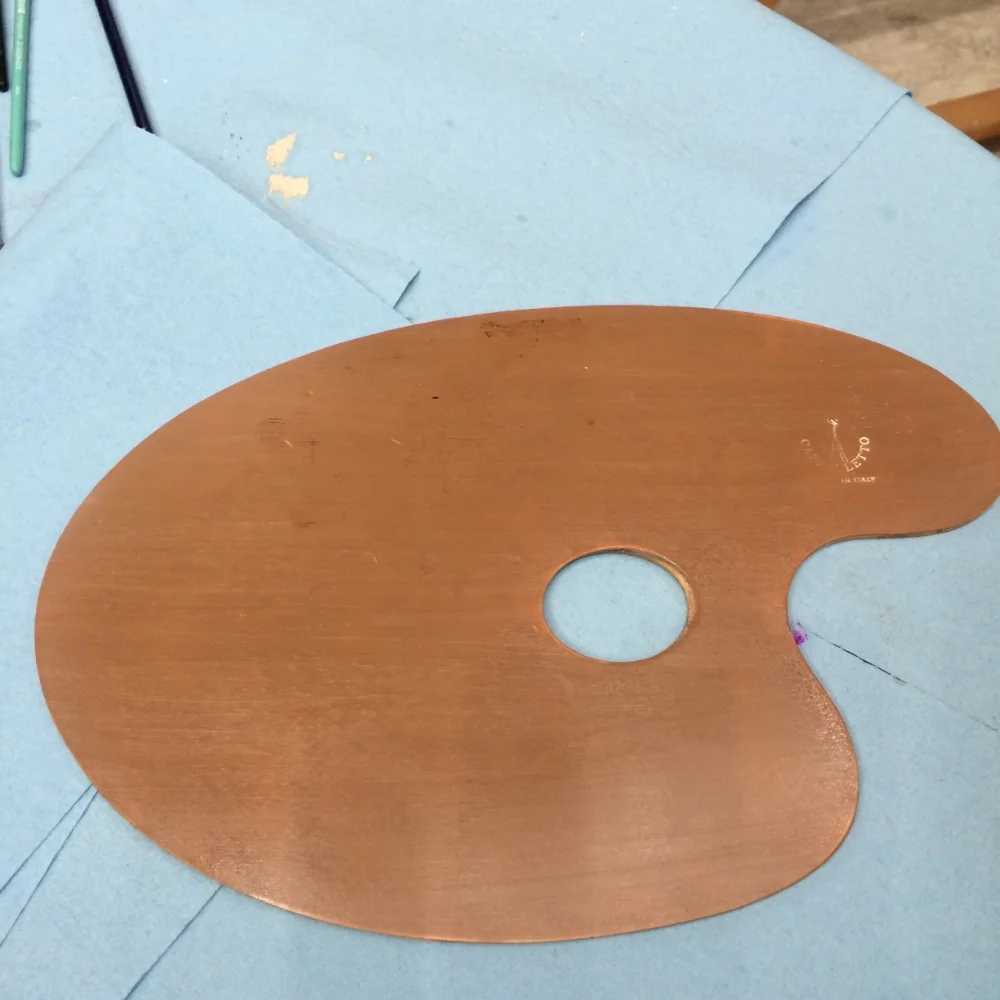Seasoning a Wood Palette
A properly sealed wood palette is a thing of beauty to work on every day. I use feather light palettes by Cappelletto from Jerry's Artarama. They come in a variety of sizes, are very economical and lightweight. They have a lacquer finish on them but it is not quite sufficient for my uses. Before I start using a palette I place a small amount of linseed oil on it and distribute it evenly over the surface of the palette with a blue paper towel. You want a very very light coat of oil. I let that sit, usually anywhere between 2-5 days depending on the humidity, until it is bone dry and repeat about 7 times. This seals the palette and keeps the wood from absorbing the oil from my paint, preventing the paint from tacking up prematurely on my palette.
Before you place your first coat of oil on the palette you can also paint it any color. For my skin tones I like working on a slightly darker palette than the natural color of the wood and painted one of my palettes 7.5YR 5/4. Some people like to paint them a perfect neutral 6N or 7N.
To seal my palette I have tried liquin, Windsor Newton Painting medium, and varnish. The linseed oil gives me a the most enjoyable working properties and best finish of the 4.
Cleaning a Wood Palette
Using harsh solvents or soap on the palette would ruin the finish so here is the procedure I use to keep my palette in great working condition for a long time.
My palette after a long day's work.
First, I scrape off all the paint except for the white. I then spread the white over the whole palette and then scrape off the white. This helps keep the palette from darkening too much over time.
Next, I wipe the palette down with a paper towel to remove as much of the paint as possible.
Next, I place a few drops of linseed oil on the palette and polish it with a clean part of the paper towel.
I leave a very thin coat of linseed oil on the palette to maintain the linseed oil film that protects my paint from the absorbent wood.
I store my palette flat in a cubbyhole to keep dust from settling on it and becoming incorporated into the layer of linseed oil.
Palettes
There are many many types of palettes. Wood and plastic pallets, as they are lightweight and can be manufactured into ergonomic shapes, are a great choice if you like to hold your palette. If you like to work from a flat surface, melamine, ceramic enamel coated butcher's trays and glass palettes are also wonderful options. There are also a lot of disposable palettes for easy cleanup.
One thing to think about when considering a palette is your working methods. Do you like to tint or stain your ground before you begin to paint? I like to work on a ground that is lightly tinted or stained with a high value, low chroma yellow orange so that I can estimate my values easier at the beginning stages of the painting. The color is very similar to my palette and is also a great unifying base for skin tones and landscapes. Using a palette that is similar in color to the tinted ground gives you a similar frame of reference for your mixing surface area on your palette: making discerning values and mixing colors easier. With a wood palette you can paint it any color you choose before you seal the wood. Glass and acrylic palettes enable you to place colored paper, such as a neutral gray, a value scale or even paint the opposite side of the work surface to your preference. Glass and plastic also make cleanup very easy. New Wave offers a neutral gray and traditional wood hand held palettes designed to reduce fatigue. The Parallel Palette designed by David Kassan is designed to reduce fatigue and back pain, and its position enables one to have the same lighting conditions on the palette as the painting surface. Furthermore, if you prefer to paint directly on the white of the canvas, plastic, melamine and butcher's trays will provide you with that same white frame of reference for mixing your paint. There are so many wonderful options when it comes to palettes.

